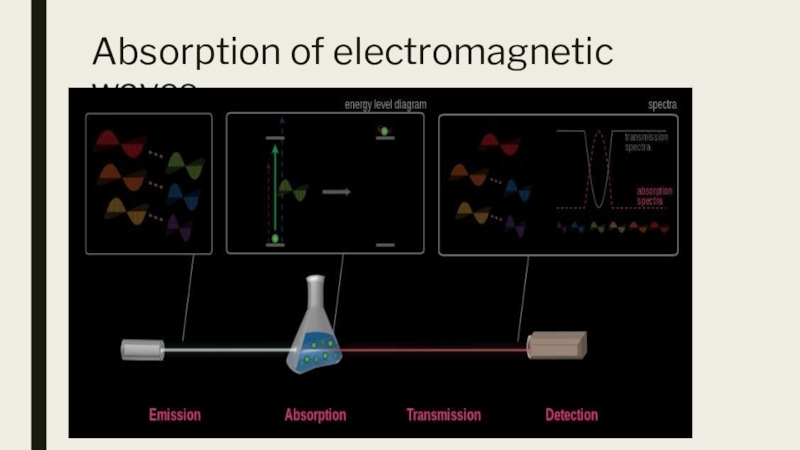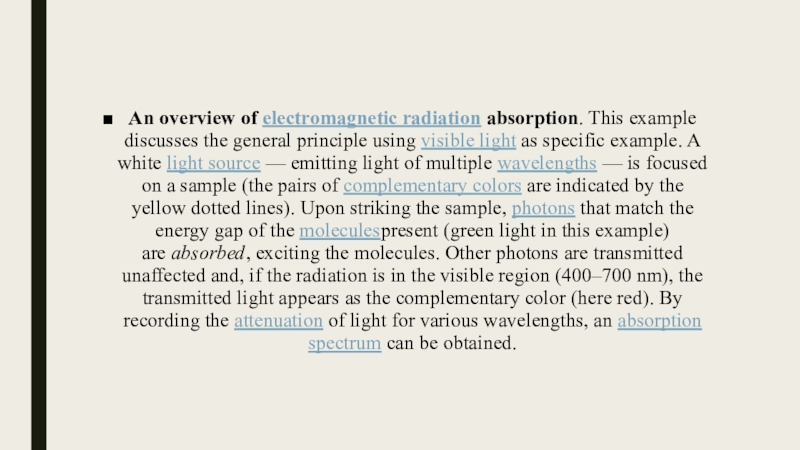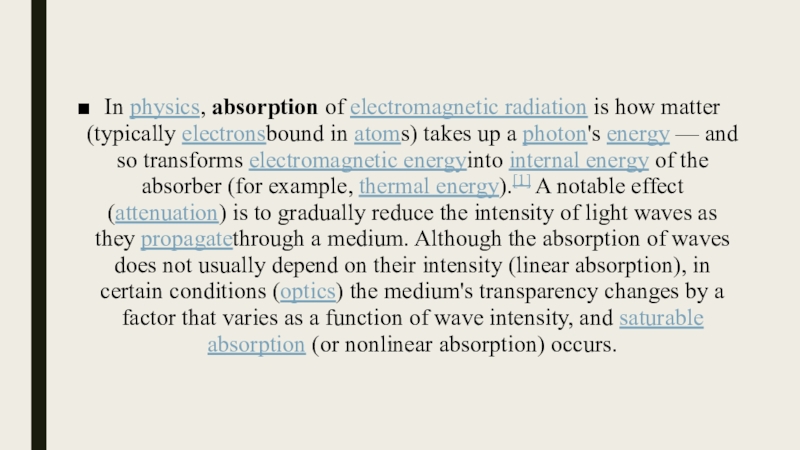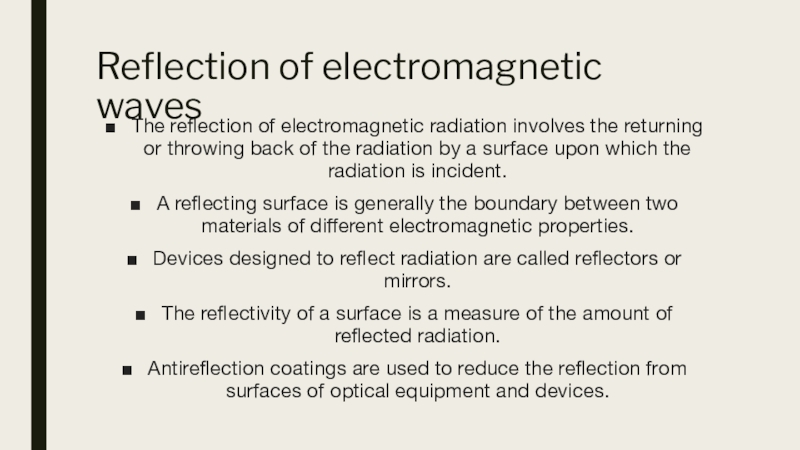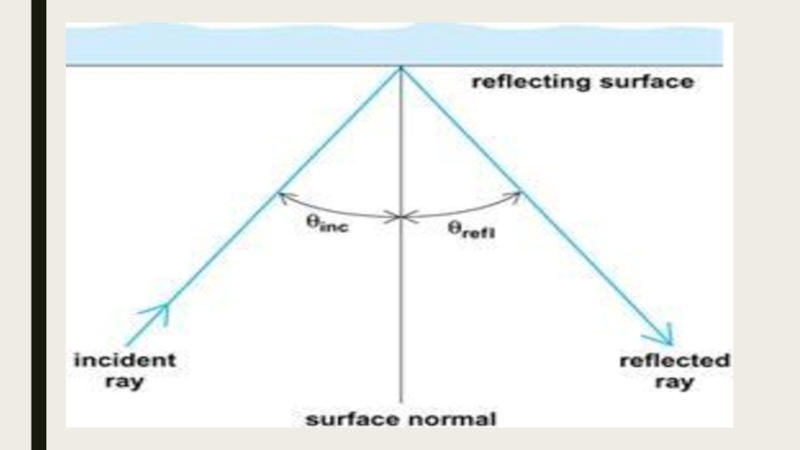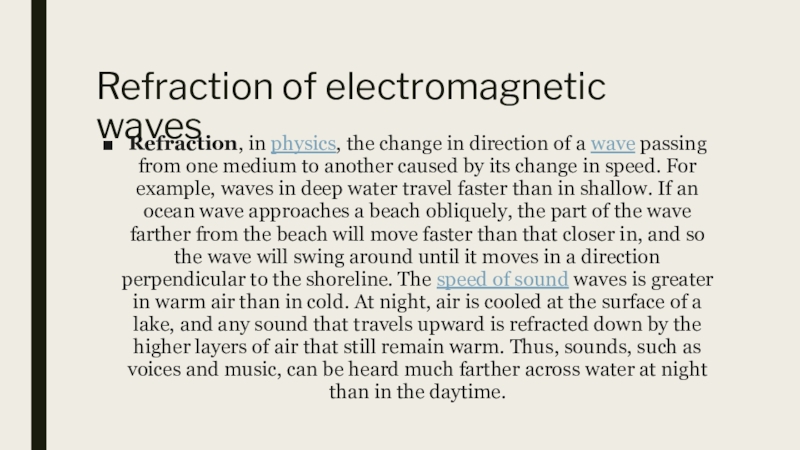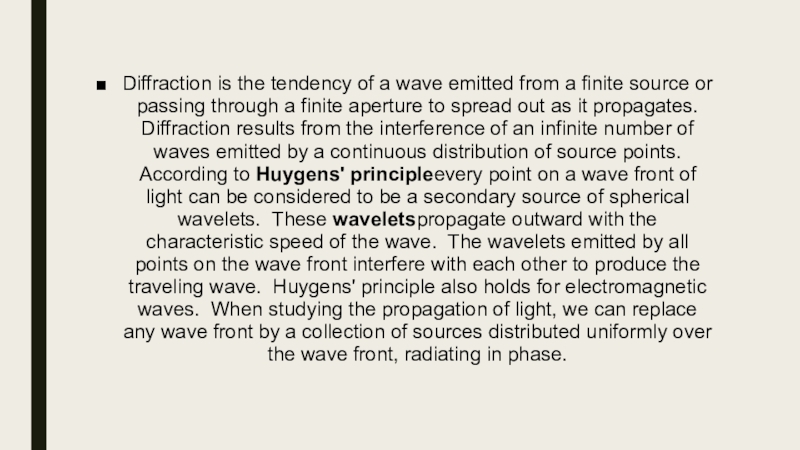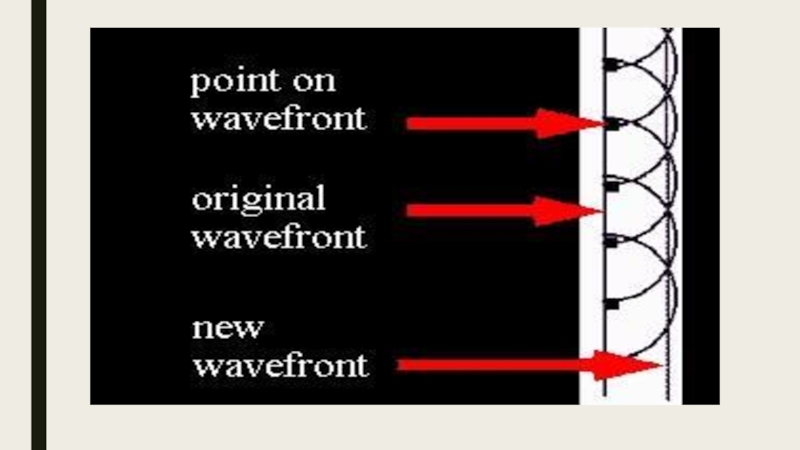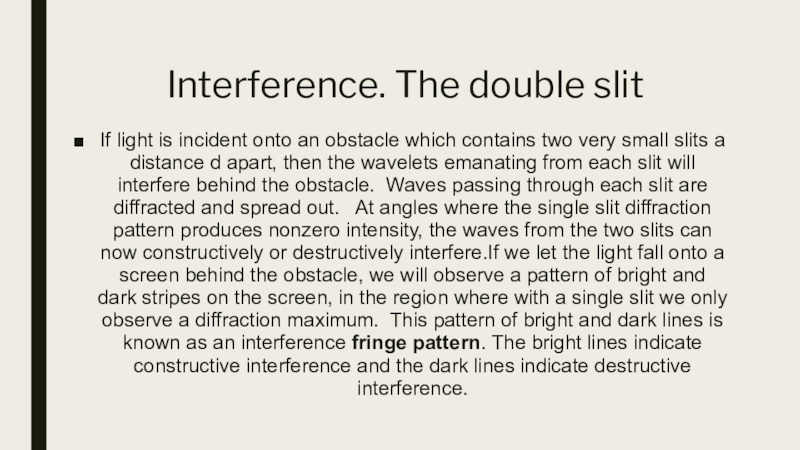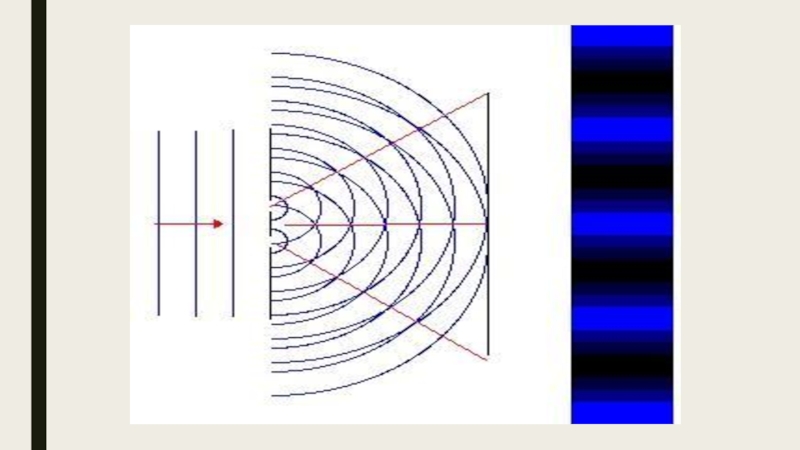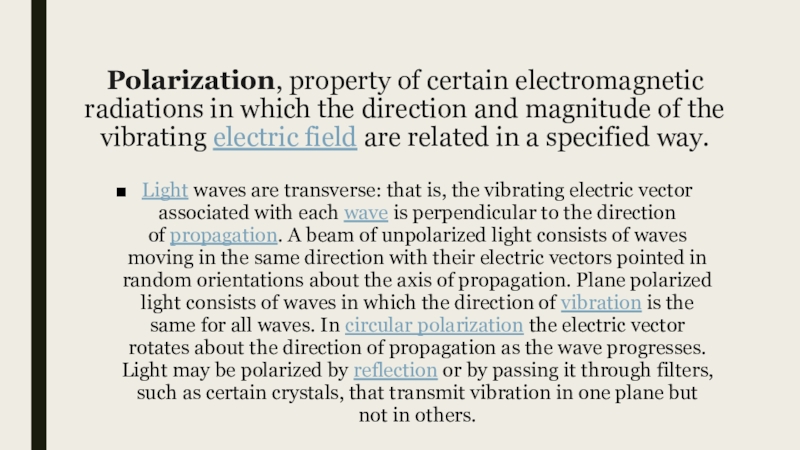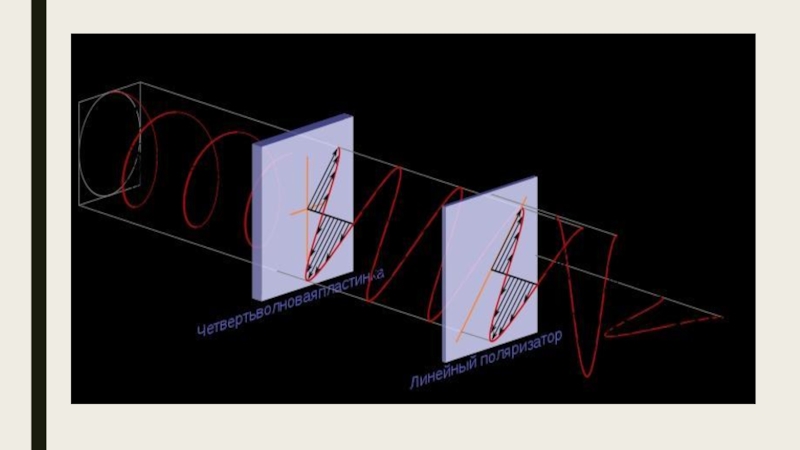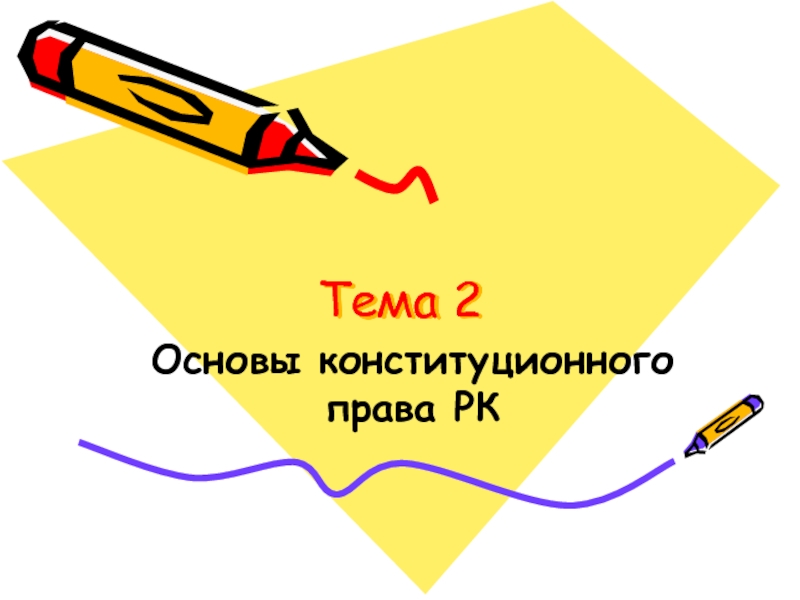Разделы презентаций
- Разное
- Английский язык
- Астрономия
- Алгебра
- Биология
- География
- Геометрия
- Детские презентации
- Информатика
- История
- Литература
- Математика
- Медицина
- Менеджмент
- Музыка
- МХК
- Немецкий язык
- ОБЖ
- Обществознание
- Окружающий мир
- Педагогика
- Русский язык
- Технология
- Физика
- Философия
- Химия
- Шаблоны, картинки для презентаций
- Экология
- Экономика
- Юриспруденция
Aisulu Muratova laboratory work and iws
Содержание
- 1. Aisulu Muratova laboratory work and iws
- 2. Absorption of electromagnetic waves
- 3. An overview of electromagnetic radiation absorption. This example discusses
- 4. In physics, absorption of electromagnetic radiation is how matter (typically electronsbound in atoms) takes
- 5. The reflection of electromagnetic radiation involves the
- 6. Слайд 6
- 7. Refraction of electromagnetic waves Refraction, in physics, the
- 8. Слайд 8
- 9. Diffraction is the tendency of a wave
- 10. Слайд 10
- 11. Interference. The double slitIf light is incident
- 12. Слайд 12
- 13. Polarization, property of certain electromagnetic radiations in
- 14. Слайд 14
- 15. Слайд 15
- 16. Thank you for attention
- 17. Скачать презентанцию
Слайды и текст этой презентации
Слайд 3An overview of electromagnetic radiation absorption. This example discusses the general principle
Слайд 4In physics, absorption of electromagnetic radiation is how matter (typically electronsbound in atoms) takes up a photon's energy — and
so transforms electromagnetic energyinto internal energy of the absorber (for example, thermal energy).[1] A notable
effect (attenuation) is to gradually reduce the intensity of light waves as they propagatethrough a medium. Although the absorption of waves does not usually depend on their intensity (linear absorption), in certain conditions (optics) the medium's transparency changes by a factor that varies as a function of wave intensity, and saturable absorption (or nonlinear absorption) occurs.Слайд 5The reflection of electromagnetic radiation involves the returning or throwing
back of the radiation by a surface upon which the
radiation is incident.A reflecting surface is generally the boundary between two materials of different electromagnetic properties.
Devices designed to reflect radiation are called reflectors or mirrors.
The reflectivity of a surface is a measure of the amount of reflected radiation.
Antireflection coatings are used to reduce the reflection from surfaces of optical equipment and devices.
Reflection of electromagnetic waves
Слайд 7Refraction of electromagnetic waves
Refraction, in physics, the change in direction
of a wave passing from one medium to another caused by its
change in speed. For example, waves in deep water travel faster than in shallow. If an ocean wave approaches a beach obliquely, the part of the wave farther from the beach will move faster than that closer in, and so the wave will swing around until it moves in a direction perpendicular to the shoreline. The speed of sound waves is greater in warm air than in cold. At night, air is cooled at the surface of a lake, and any sound that travels upward is refracted down by the higher layers of air that still remain warm. Thus, sounds, such as voices and music, can be heard much farther across water at night than in the daytime.Слайд 9Diffraction is the tendency of a wave emitted from a
finite source or passing through a finite aperture to spread
out as it propagates. Diffraction results from the interference of an infinite number of waves emitted by a continuous distribution of source points. According to Huygens' principleevery point on a wave front of light can be considered to be a secondary source of spherical wavelets. These waveletspropagate outward with the characteristic speed of the wave. The wavelets emitted by all points on the wave front interfere with each other to produce the traveling wave. Huygens' principle also holds for electromagnetic waves. When studying the propagation of light, we can replace any wave front by a collection of sources distributed uniformly over the wave front, radiating in phase.Слайд 11Interference. The double slit
If light is incident onto an obstacle
which contains two very small slits a distance d apart,
then the wavelets emanating from each slit will interfere behind the obstacle. Waves passing through each slit are diffracted and spread out. At angles where the single slit diffraction pattern produces nonzero intensity, the waves from the two slits can now constructively or destructively interfere.If we let the light fall onto a screen behind the obstacle, we will observe a pattern of bright and dark stripes on the screen, in the region where with a single slit we only observe a diffraction maximum. This pattern of bright and dark lines is known as an interference fringe pattern. The bright lines indicate constructive interference and the dark lines indicate destructive interference.Слайд 13Polarization, property of certain electromagnetic radiations in which the direction
and magnitude of the vibrating electric field are related in a specified
way.Light waves are transverse: that is, the vibrating electric vector associated with each wave is perpendicular to the direction of propagation. A beam of unpolarized light consists of waves moving in the same direction with their electric vectors pointed in random orientations about the axis of propagation. Plane polarized light consists of waves in which the direction of vibration is the same for all waves. In circular polarization the electric vector rotates about the direction of propagation as the wave progresses. Light may be polarized by reflection or by passing it through filters, such as certain crystals, that transmit vibration in one plane but not in others.

